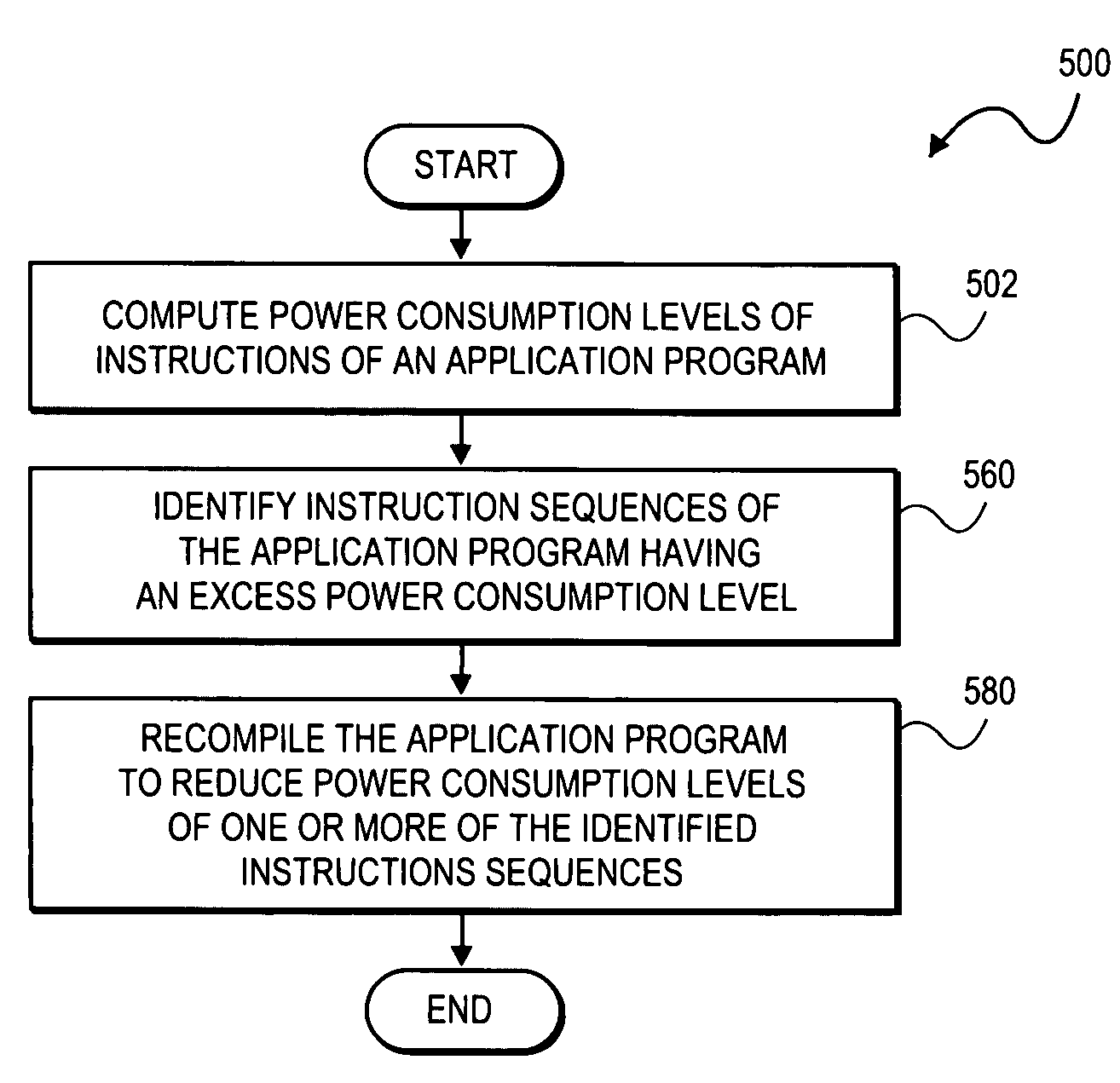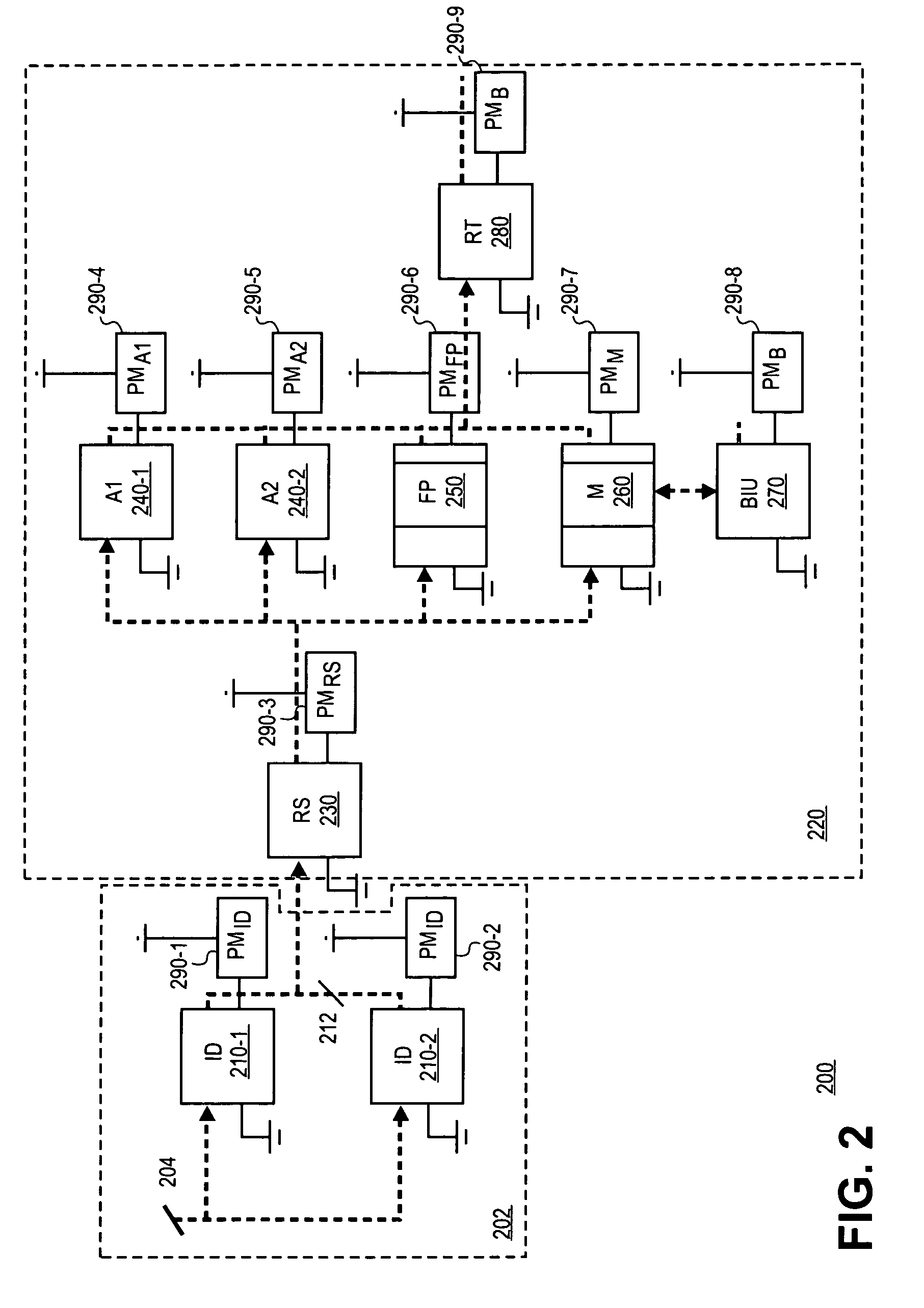Method for computing power consumption levels of instruction and recompiling the program to reduce the excess power consumption
a power consumption level and instruction technology, applied in the field of lowpower programming, can solve the problems of inordinate power consumption during execution, limited use of mobile platforms, and depletion of power resources of attached batteries within a relatively short amount of tim
- Summary
- Abstract
- Description
- Claims
- Application Information
AI Technical Summary
Problems solved by technology
Method used
Image
Examples
Embodiment Construction
[0019]A method and apparatus for power performance monitors for low-power program tuning are described. In one embodiment, the method includes the computation of power consumption levels of instructions of an application. Once consumption levels are computed, instruction sequences of the application are identified that exhibit an excess power consumption level. For the identified instruction sequences, the application program is recompiled to reduce power consumption levels of one or more of the identified instruction sequences.
[0020]In one embodiment, in situations where power consumption by an instruction sequence cannot be reduced, utilization of functional units required to execute the instruction sequence is monitored. Hence, the instruction sequence may be executed during periods of time when utilization of the functional units is below a predetermined level. In one embodiment, power consumption levels of the instructions of an application program are reduced, and in addition ...
PUM
 Login to View More
Login to View More Abstract
Description
Claims
Application Information
 Login to View More
Login to View More - R&D
- Intellectual Property
- Life Sciences
- Materials
- Tech Scout
- Unparalleled Data Quality
- Higher Quality Content
- 60% Fewer Hallucinations
Browse by: Latest US Patents, China's latest patents, Technical Efficacy Thesaurus, Application Domain, Technology Topic, Popular Technical Reports.
© 2025 PatSnap. All rights reserved.Legal|Privacy policy|Modern Slavery Act Transparency Statement|Sitemap|About US| Contact US: help@patsnap.com



